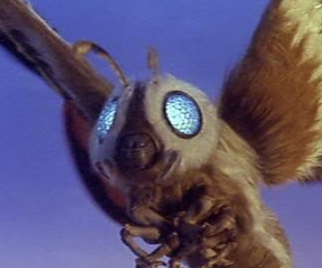Every study performed on insect counts has concluded that overall insect populations are declining, though there is not complete global coverage of data. One study in Germany found that the flying insect population had decreased by 75% from 1990 to 2015.
A 2019 survey of 24 entomologists working on six continents found that on a scale of 0 to 10, with 10 being the worst, all the scientists rated the severity of the insect decline crisis as being between 8–10.
Nothing scares me quite as much as the thought that I might live to see global ecological collapse.

If you think about it, when was the last time you saw a lighting bug. I’ve never seen a firefly in my entire life despite living in a country that had native species.
When I was growing up in the 1970s there were thousands of lightning bugs at night. Any time going outdoors after sunset I could see hundreds of lights winking on and off every few seconds, in fascinating patterns that I loved to look at. Later at night the bugs would fly higher or stop flashing
It was such an ordinary part of life, but movies and tv at the time don’t capture that very well .
Now its gone, for most areas
Saw a documentary about a Chinese billionaire on TV a couple of years ago. He was born poor in some village and worked his way up, owning dozens of factories now. He was super busy, grumpy to the people around him and very torn. He asked the camera if he is part of the solution or part of the problem, he couldn’t tell. Told us he misses the sounds of frogs in the evening, when he was playing with his friend in the forests and fields that are now industrial parks. Made me cry, what are we doing?
It is sad!
pave paradise, and put up a parking lot
Thankfully they are alive and doing quite well in our little forest home in Quebec, Canada. Of all the places I used to see them as a kid almost none are still vibrant and busy, but our little corner of forest here has a good population. For now…
I have seen them twice in the last year, but it was only a single bug each time. A sad lightning bug trying to find others to mate… I didn’t see another one around it.
You have to get out away from cities. We get them in our yard every summer and our kids run about catching them.
I get a bunch of them every year in NYC, weirdly enough
In new hampshire, relatively often when it’s the right season.
I didn’t see any until I made my front yard a designated butterfly spot ( making i don’t have to follow by laws about lawn maintenance) now I see tons.
THAT is my fear. I’m watching the ecosystem collapse on my front porch. I could go on for a long, long time with my observations, both historic and recent, but the food chain is collapsing where I’m at. Wildlife populations are noticeably crashing from what I observed 4-years ago.
SOURCE: I’m old and outside a lot. Always looking around, seeing what’s changing.
My younger friend asked why some old cars had a piece of plexiglass on the front of the hood.
I had to explain that thirty years ago, in this area, you would drive through enough bugs in a day to cover your windscreen. The bug shield would help deflect them. It was a pretty grim lunch after that.
Hell no I Wana see that … People finally taking serious actions against it when its way too late … There’s nothing better then seeing rich people trying to buy stuff that can’t be bought… And finally dying full of regrets knowing it was their and theyr families fault.
You wont see it, you’ll die first because they’re rich enough to prolong their demise.
I hope people would wake up in time
The time is now.
The time was ten years ago. We’re boned.
Yeah go ahead and convince them , I have never even met in real life someone that slightly agrees not even to a big armed revolution but at the fact that there is something terribly wrong in this country 😏
Welcome to the party.
Everyone else would die too. Not worth it, there are better ways to eliminate the parasite class that are more effective and less self-harmful.
Doesn’t seem anything is even starting… This is… let’s call it the back up plan and it going so great it might end up being the plan A
Societal collapse will happen before human extinction. One way or another everything is going to sort itself out.
However I would prefer that we sort it out and use our might to reverse the damage already done. Otherwise a lot of people (rich and poor) are going to die (and are already dying)
There is a possibility that the Higgs field isn’t at it’s lowest energy state, and that a random quantum tunneling event could drag the Higgs field to that lower state. In this unsettling scenario, a bubble pops into existence somewhere in the universe. Inside the bubble, the laws of physics are wildly different than they are outside the bubble. The bubble expands at the speed of light, eventually taking over the entire universe. Galaxies drift apart, atoms can’t hold themselves together, and the ways that particles interact are fundamentally changed. Whatever form the universe takes after this event certainly wouldn’t be hospitable for humans.
So spontaneous instant death. Not scarier than an aneurysm.
This is know as “False Vacuum (Decay)”. Kurzgesagt made a video about it.
Also romanticised in the famous novel The Neverending Story.
As old and massive as the universe is, if it could have happened, it likely would have already.
And that’s the thing:
Assuming it did, you couldn’t see it approach until it hit you because it’s moving at the speed of light! It could also have happened, but just super far away such that it will never reach us due to expansion between its origin point and us being faster than c!
Also just because the universe is frickin old doesn’t mean it is statistically bound to have happened. There are plenty of ways of making it even more astronomically unlikely but still possible…
That makes sense, I was thinking we would see it coming, but definitely not.
Yeah, so if I don’t see it coming, I’m not scared.
“Why should I fear death? If I am, death is not. If death is, I am not. Why should I fear that which cannot exist when I do?”
- Epicurus
Basically, as big and old as the universe is, it’s easy to pick an even bigger number for the expected recurrence of a vacuum decay. So, it’s still possible.
Sounds like a great way to reboot the DC or Marvel universe. How probable is this bubble bursts and affects us before we fuck up our environment for good? Would we be able to know if it already happened somewhere far from us? Like, “we have 5 years, that’s all we’ve got”.
Since the bubble travels at the speed of light, no, there’s no way to know. It could be an hour away from us right now and we wouldn’t even see it hit us, we’d just evaporate from existence nearly instantaneously.
The bosses from my 3 part time jobs would be very disappointed I left them short staffed.
Are you sure you can’t come in anyway? Janice didn’t turn up either and we’re really stretched.
Somehow, that’s comforting to me. And hey, it’s been almost a day and we are still around.
Don’t jinx it ;)
It’s that effing Peter Parker again. No matter how good the wizard, you can’t keep interrupting while he is trying to change memories across the entire multiverse
Cop knelt and kissed the feet of a priest and a queer threw up at the sight of that
Huh
I thought that was a reference to Bowie’s “Five Years”, pardon me
Yeah, I can’t work up much existential dread at this prospect. Given the immensity of the universe, the odds of this happening anywhere that it will affect the human race anytime soon are pretty damn slim.
Will there be infinite expansion or will the big bang eventually get reversed in to a big crunch? This question might not even be relevant if this bubble phenomenon rips the entire universe apart. What if such a bubble already exists beyond the horizon and will devour our galaxy in a billion years.
We have no way to know what the resultant physics would be like within the bubble, so there is no way to even speculate about what would happen.
Exciting times ahead. Who knows what will happen… if anything at all. It’s also entirely possible that nothing special is going on or ever will be.
there’s a fun novel by Greg Egan exploring this idea, except at half of speed of light for narrative purposes https://en.wikipedia.org/wiki/Schild’s_Ladder
Just FYI this hasn’t happened for at least several billion years so it’s not likely to happen in the next 100.
Edit: Why the downvotes lol
Has it not? Are you sure the bubble isn’t just 1 light second away? Anything travelling towards you at the speed of light is not perceptible until it hits you. This is why the ability to accelerate something to FTL speeds would be an unstoppable super weapon and most likely lead to interstellar species destroying one another until only 1 remains. Or at least that’s my take.
If you separate the halves of your brain, they can operate relatively fine independently of each other, each controlling roughly half of the body. When one half does something, and the other half is asked why they did it, the other half will make up a plausible reason why they just did that action. There’s a theory that this is basically how your brain works all the time, just guessing why it did things, and potentially with multiple processes happening in relative isolation that aren’t consciously aware of each other.
That explains my life.
Fun fact: your left eye doesn’t go only to your right brain. The left half of your field of vision in your left eye goes to your right brain. Same with the right half of your left eye, and your right eye is split up similarly. How nuts is that?
Wow weird
Here’s a good video on it.
There was also a House MD episode with a patient with that.
I find this kind of exciting actually because that suggests that our brain is already a hivemind with two minds melded into one. This opens up potential for expanding the mind in the future either through connection with other biological minds of even artificial ones by hooking into the corpus callosum. :)
Microbiology can be so much fun!
Streptococcus pyogenes causes a flesh-eating disease (necrotizing fasciitis). This species of bacteria releases toxins that kill living tissue, so you better make sure that paper cut doesn’t get infected.
Mycobacterium tuberculosis is famous for a bunch of different pandemics over the centuries. If you thought covid was fun, imagine coughing up blood.
Clostridium botulinum is special, because it produces a very spicy toxin, so you don’t even have to ingest any living cells or spores of C. botulinum to get killed by it. If you do, you can even have your very own toxin factory inside you.
Vibrio cholerae is another classic responsible for numerous pandemics. This one is a bit different, because it involves lethal amounts of diarrhea.
Oh, and the scary bit? There are people who don’t believe bacteria or viruses exist. They actively oppose taking measures against these things. Humans can be truly horrifying at times.
“Lethal amounts of diarrhea” has now entered second place on my Worst Nightmares list. Thanks for that…


Rule 34
Another “fun” fact: it’s one of the biggest killers in the third world, especially of small children, and at some point there was a diarrhea magazine as a result.
I can’t believe tetanus got left out here. It’s a common soil bacteria like botulism, but has the opposite effect if it gets in you. It makes all your muscles forcibly contract and cramp up until you die.
Botulism is really easy to get if you can food wrong, because it’s the one abundant bacteria that will survive limitless time at 100C. (To can vulnerable things properly, you use high pressures to make the water get hotter before it begins to boil, and cools down as a result)
These are nasty, but I still find rabies the most scary
If we’re branching out into possible non-life, prion diseases like mad cow or kuru have a creep factor. You could be terminally infected already, as you read this, and not know until you start getting clumsy and confused years from now. Also kuru is spread by long-term habitual brain cannibalism, so that’s culturally uncomfortable.
Prions - yeah, they’re definitly creepy. They’re also hard to destroy, so they can accumulate in nature over time.
And while we’re at it, I think Naegleria fowleri, the brain eating amoeba that lives in warm water and gets in through your nose should get an honorable mention!
Thank the decomposers, I guess.
Hey, I’m clumsy and confused already!
Me too, bro. That’s a mood.
This was not a good thread to read before bed
Good to know Lemmy is addictive enough to bait people into giving themselves nightmares, I guess.
Your immune system gives some protection against botulinum, but it doesn’t fully develop until about six months to a year old. This is why you should never ever feed honey to an infant. Bees will occasionally end up on the ground, picking up botulinum. There’s a very small chance of a trace of the bug ending up in honey. It’s not enough to harm an older child or adult, but even thst tiny amount can kill a baby.
Yeah, it will basically colonise their intestines instead of the bacteria that are supposed to, and just poison them continuously. It’s especially a concern if you live near a construction site just because of all the dirt being moved around and exposed to air, IIRC.
You can’t leave us hanging, what’s 1st place on your list?
Reincarnation, which has now been reinforced by no. 2 (pun not intended, but welcomed).
Well, how about reincarnation coupled with eternal lethal diarrhea?
Well… if it means I’d die of lethal diarrhea immediately after being reincarnated, I guess it could be worse! Like having to live 6-7 decades with the knowledge that I may or may not, at one point, contract lethal diarrhea, and that I’ll just keep on coming back to this particular reverse-roulette wheel over and over and over again, being forced to play the odds on an infinite canvas of probabilities. You know what they say, the anxiety’s always worse than the thing-in-itself!
Viruses are sneaky! Their whole goal is to trick you into helping them survive and reproduce.
Gamma ray bursts from celestial events such as a supernova. One of these - GRB 221009 released 1,000 times more energy in 5 minutes than our Sun has emitted throughout its 4.5 billion year life. GRBs from different galaxies have set off detectors on earth designed to detect nuclear explosions. One of these in our galaxy, pointed directly at earth could end all life on it. https://en.wikipedia.org/wiki/Gamma-ray_burst
Each year, is about a 1/2 of 1 percent the sun will give out a flare so big, it will not only destroy all power distribution to the half of the earth exposed, and destroy the internet there, but cut off food distribution, starving most of the population in any county . Last time it happened was in the 1800s but no stuff to destroy then. And food was local.
It would be years before things were normal . Our current setup is literally doomed to failure for a random half of the earth
There was a bit of tech around at the time - telegraph. The flare sparked fires in telegraph offices and shocked some operators. As in electric shock, not a big fright, though no doubt also that. Some operators disconnected their batteries and were able to communicate by the auroral current alone.
https://en.m.wikipedia.org/wiki/Carrington_Event
The descriptions of the aurora are wild.
Can we just aim it at Belgium and all have a jolly good laugh?
Belgium is 50 years in the past. Won’t work that well.
Source: Dutchman.
Also, these days that is a compliment.
Well, I guess it is racist Wednesday for some of the planet currently, even if not my timezone …but why them?
Are you simply dying to be offended on someone else’s behalf darling? Sweety?
Pour yourself a large G&T, poppet, there’s a dear
I’ll never turn down G&T, but more importantly, what did Belgium ever do to you? I’m just curious…
If you’ve got a spinning wheel of ‘who’s gonna get it today’ and Belgium came up, that’s fine, too
It’s an intercultural joke from where I’m from.
I’m sorry that you’re so bo-o-o-ring that you can neither appreciate nor spontaneously produce humour, and that you have to resort to pretending to be morally superior to try to get attention for yourself by randomly calling people racists like some sort of yank
No, not at all - I think it’s hilarious! You’ve completely misread me
I was just curious as to why them (obviously we’ve got to pick on someone)
Making jokes on Brussels is popular with anti-EU factions, just FYI. Not exclusively so, of course, but its their main goto.
Like seeing someone wearing an England flag as a cape, football game or no game, its just best to keep clear of that person
for a random half of the Earth
LET’S GO GAMBLING
let’s hope the americans get the next flare
wait no, it could very well be over the pacific. But poor polynesians 😕
Boy I can’t wait.
Combinatorics scares me, the immense size of seemingly trivial things.
For example: If you take a simple 52 card poker deck, shuffle it well, some combination of 4-5 riffles and 4-5 cuts, it is basically 100% certain that the order of all the cards has never been seen before and will never been seen again unless you intentionally order them like that.
52 factorial is an unimaginable number, the amount of unique combinations is so immense it really freaks me out. And all from a simple deck of playing cards.
Chess is another example. Assuming you aren’t deliberately trying to copy a specific game, and assuming the game goes longer than around a dozen moves, you will never play the same game ever again, and nobody else for the rest of our civilization ever will either. The amount of possible unique chess games with 40 moves is far far larger than the number of stars in the entire observable universe.
You could play 100 complete chess games with around 40 moves every single second for the rest of your life and you would never replay a game and no other people on earth would ever replay any of your games, they all would be unique.
One last freaky one: There are different sizes of infinity, like literally, there are entire categories of infinities that are larger than other ones.
I won’t get into the math here, you can find lots of great vids online explaining it. But here is the freaky fact: There are infinitely more numbers between 1 and 2 than the entire infinite set of natural numbers 1, 2, 3…
In fact, there are infinitely more numbers between any fraction of natural numbers, than the entire infinite natural numbers, no matter how small you make the fraction…
In one of Vsauce’s videos he suggested a good visualisation of the number of unique shuffles of a deck of cards that was originally suggested by Scott Czepiel.
Imagine you have a friend that is shuffling a deck of cards and ordering the deck uniquely every second. Also imagine that every action you take is completed instantaneously.
You stand on the equator. Wait a billion years. Then take a step. Wait another billion years. Then take another step. Continue this until you have got back to where you started.
Then take 0.02ml from the Pacific Ocean. Wait another billion years. Then take a step. Continue until you get back to where you started and take another drop out of the Pacific Ocean.
Repeat this process until the entire Pacific Ocean is empty. Then place a sheet of paper on the ground at sea level.
Refill the ocean and repeat - wait a billion years between steps as you walk around the equator, take a drop of water out of the Pacific Ocean every time you get back to where you started and place a piece of paper on the ground in a tower before refilling the Pacific Ocean and repeating.
When the tower of paper reaches the sun do you think that your friend has managed to produce each, unique ordering of the cards?
Nope! Not even close…
If you were to repeat all of the above 3000 times, then he’d be pretty much done.
Natural numbers being infinite, how it be possible for the values between 1 and 2 to be “more infinite” ?
It’s called countable and uncountable infinity. the idea here is that there are uncountably many numbers between 1 and 2, while there are only countably infinite natural numbers. it actually makes sense when you think about it. let’s assume for a moment that the numbers between 1 and 2 are the same “size” of infinity as the natural numbers. If that were true, you’d be able to map every number between 1 and 2 to a natural number. but here’s the thing, say you map some number “a” to 22 and another number “b” to 23. Now take the average of these two numbers, (a + b)/2 = c the number “c” is still between 1 and 2, but it hasn’t been mapped to any natural number. this means that there are more numbers between 1 and 2 than there are natural numbers proving that the infinity of real numbers is a different, larger kind of infinity than the infinity of the natural numbers
Great explanation by the way.
I get that, but it’s kinda the same as saying “I dare you!” ; “I dare you to infinity!” ; “nuh uh, I dare you to double infinity!”
Sure it’s more theoretically, but not really functionally more.
It’s like when you say something is full. Double full doesn’t mean anything, but there’s still a difference between full of marbles and full of sand depending what you’re trying to deduce. There’s functional applications for this comparison. We could theoretically say there’s twice as much sand than marbles in “full” if were interested in “counting”.
The same way we have this idea of full, we have the idea of infinity which can affect certain mathematics. Full doesn’t tell you the size of the container, it’s a concept. A bucket twice as large is still full, so there are different kinds of full like we have different kinds of infinity.
When talking about infinity, basically everything is theoretical
but not really functionally more.
Please show me a functional infinity
Right, an asymptote I guess, in use, but not a number.
It’s been quite some time since I did pre-calc, but I remember there being equations where it was relevant that one infinity was bigger than another.
This reminds me of a one of Zeno’s Paradoxes of Motion. The following is from the Stanford Encyclopaedia of Philosophy:
Suppose a very fast runner—such as mythical Atalanta—needs to run for the bus. Clearly before she reaches the bus stop she must run half-way, as Aristotle says. There’s no problem there; supposing a constant motion it will take her 1/2 the time to run half-way there and 1/2 the time to run the rest of the way. Now she must also run half-way to the half-way point—i.e., a 1/4 of the total distance—before she reaches the half-way point, but again she is left with a finite number of finite lengths to run, and plenty of time to do it. And before she reaches 1/4 of the way she must reach 1/2 of 1/4=1/8 of the way; and before that a 1/16; and so on. There is no problem at any finite point in this series, but what if the halving is carried out infinitely many times? The resulting series contains no first distance to run, for any possible first distance could be divided in half, and hence would not be first after all. However it does contain a final distance, namely 1/2 of the way; and a penultimate distance, 1/4 of the way; and a third to last distance, 1/8 of the way; and so on. Thus the series of distances that Atalanta is required to run is: …, then 1/16 of the way, then 1/8 of the way, then 1/4 of the way, and finally 1/2 of the way (for now we are not suggesting that she stops at the end of each segment and then starts running at the beginning of the next—we are thinking of her continuous run being composed of such parts). And now there is a problem, for this description of her run has her travelling an infinite number of finite distances, which, Zeno would have us conclude, must take an infinite time, which is to say it is never completed. And since the argument does not depend on the distance or who or what the mover is, it follows that no finite distance can ever be traveled, which is to say that all motion is impossible. (Note that the paradox could easily be generated in the other direction so that Atalanta must first run half way, then half the remaining way, then half of that and so on, so that she must run the following endless sequence of fractions of the total distance: 1/2, then 1/4, then 1/8, then ….)
Your explanation is wrong. There is no reason to believe that “c” has no mapping.
Edit: for instance, it could map to 29, or -7.
Yeah, OP seems to be assuming a continuous mapping. It still works if you don’t, but the standard way to prove it is the more abstract “diagonal argument”.
But then a simple comeback would be, “well perhaps there is a non-continuous mapping.” (There isn’t one, of course.)
“It still works if you don’t” – how does red’s argument work if you don’t? Red is not using cantor’s diagonal proof.
Yeah, that was actually an awkward wording, sorry. What I meant is that given a non-continuous map from the natural numbers to the reals (or any other two sets with infinite but non-matching cardinality), there’s a way to prove it’s not bijective - often the diagonal argument.
For anyone reading and curious, you take advantage of the fact you can choose an independent modification to the output value of the mapping for each input value. In this case, a common choice is the nth decimal digit of the real number corresponding to the input natural number n. By choosing the unused value for each digit - that is, making a new number that’s different from all the used numbers in that one place, at least - you construct a value that must be unused in the set of possible outputs, which is a contradiction (bijective means it’s a one-to-one pairing between the two ends).
Actually, you can go even stronger, and do this for surjective functions. All bijective maps are surjective functions, but surjective functions are allowed to map two or more inputs to the same output as long as every input and output is still used. At that point, you literally just define “A is a smaller set than B” as meaning that you can’t surject A into B. It’s a definition that works for all finite quantities, so why not?
Give me an example of a mapping system for the numbers between 1 and 2 where if you take the average of any 2 sequentially mapped numbers, the number in-between is also mapped.
because I assumed continuous mapping the number c is between a and b it means if it has to be mapped to a natural number the natural number has to be between 22 and 23 but there is no natural number between 22 and 23 , it means c is not mapped to anything
Then you did not prove that there is no discontiguous mapping which maps [1, 2] to the natural numbers. You must show that no mapping exists, continugous or otherwise.
It’s weird but the amount of natural numbers is “countable” if you had infinite time and patience, you could count “1,2,3…” to infinity. It is the countable infinity.
The amount of numbers between 1 and 2 is not countable. No matter what strategies you use, there will always be numbers that you miss. It’s like counting the numbers of points in a line, you can always find more even at infinity. It is the uncountable infinity.
I greatly recommand you the hilbert’s infinite hotel problem, you can find videos about it on youtube, it covers this question.
Because the second one is bounded ?
Basically, if two quantities are the same, you can pair them off. It’s possible to prove you cannot pair off all real numbers with all integers. (It works for integers and all rational numbers, though)
How many infinities you accept as meaningful is a matter of preference, really. You don’t even have to accept basic infinity or normal really big numbers as real, if you don’t want to. Accepting “all of them” tends to lead to contradictions; not accepting, like, 3 is just weird and obtuse.
I thought the same but there is a good explanation for it which I can’t remember
I’m confused as well. Isn’t that like saying that there is more sand in a sandbox than on every veach on the planet?
We’re talking about increasingly smaller fractions here. It’s more like saying if you ground up all the rocks on earth into sand you would have more individual pieces of sand than individual rocks.
Some species of snails are infected with a parasitic flatworm called Leucochloridium paradoxum, which has a life cycle that involves manipulating the snail’s behavior and appearance to increase its own chances of survival. The parasite causes the snail’s eyes to turn into worm-like protrusions, which are actually just the parasite’s own larvae.
To birds, these worm-like eyes look like tasty little morsels, and they’ll often peck at them to eat them. But in doing so, they’re actually ingesting the parasite’s larvae, which then complete their life cycle inside the bird’s digestive system.
they are then pooped out onto other snails? How does this life cycle work
The larvae (possibly not quite the right word) eaten by the birds lodge in the intestinal tract near the cloaca. The eggs they produce are passed out, and snails eat the eggs.
~This comment is best read with Hans Zimmer’s “The Circle of Life” playing in the background.~
Aww
Snails eat eggs???
Yes, but not deliberately - I think it depends on the species, but they’ll eat decomposing plant matter, faecal matter, carrion, soil, fungi. They’re not too picky. If the bird guano contains tiny flatworm eggs, bad news for the snail.
That’s rough, oof!
I remember a story where Charles darvin was on expedition and saw a wasp stinging a tarantula and laying her eggs into the spider and it had the most grueling death. Something like that, and that’s where he realised that no god can be so cruel to make something like that. Now i have no idea if that is just a story or something that actually happened. But if you believe in any creator and see shit like that and still think: man that god guy sure has a funny sense of humor, you’re kinda weird.
I scrubbed my toe once and realised that a good God can’t exist, besides for the inherent contradictions in the Torah that also mean the Jewish God can’t exist.
There are about the same number of bacteria cells in your body as human cells, and some of the bacteria in your intestines, ‘gut biome’, can affect your preferences for certain foods effectively controlling your mind.
A ‘reference man’ (one who is 70 kilograms, 20–30 years old and 1.7 metres tall) contains on average about 30 trillion human cells and 39 trillion bacteria,
https://www.nature.com/articles/nature.2016.19136
Is eating behavior manipulated by the gastrointestinal microbiota? Evolutionary pressures and potential mechanisms:
https://onlinelibrary.wiley.com/doi/full/10.1002/bies.201400071
That probably freaks me out just as much as time passing not being fundamental under B time indicated by general relativity or free will being illusory and the universe is more likely deterministic.
Is the universe more likely deterministic? :o
Even when it is not deterministic at a single event, it is at a group of events. I know that sounds contradictory, and there is probably a better way to word that, but for example - if quantum randomness means that you cannot predict where a specific particle will go each time you measure it, you can predict the distribution curve of where the particle will be if you measure it some arbitrarily large number of times.
Can you ask the universe when my landlady will lower my rent pls? I don’t understand particle physics
Read the Wikipedia article on Radon. That should do the trick.
There’s worse. Ever heared of FOOF? https://www.science.org/content/blog-post/things-i-won-t-work-dioxygen-difluoride
Eh, FOOF is so unstable that it’s very hard to make enough of it to do any real damage. It’s also just very hard to make. It’s only remotely stable at cryogenic temperatures, and is so reactive that without an inert atmosphere it will rapidly decay into something more stable. Granted, it will do so by oxidizing the molecular oxygen in the air (which is as insane as it sounds) and release a ton of energy in the process but assuming you don’t already have a bunch of it, you won’t be able to create enough of it fast enough to do any meaningful damage without a specialized laboratory and associated equipment.
Chlorine Triflouride however, can be made in your kitchen, and is just stable enough that, assuming you’ve taken some precautions, it’s possible to accumulate enough of it to immolate yourself in one of the worst possible ways.
Chlorine trifluoride, go on
It’s rated 4/4 in everything but flammability.
“Very toxic, very corrosive, powerful oxidizer, violent hydrolysis”
Pretty spicy, but we can do better than that.
Okay but how do I make it
very carefully
And in very small quantities. Many rocket scientists have learned it the hard way. See the book Ignition by John D. Clark for more information.
I’m only just barely smart enough to occasionally realize that when the smart people start quietly losing their shit over something I can’t possibly understand, I should have long since been gone by the time they start losing their shit over whatever magic has now prematurely doomed the universe to its inevitable heat death.
Or I could just drink my face off. That works, too.
OMG explosions and fire just did an episode on this. He went to a lab in Germany and they made some…
Release 9 days ago.
Aww but it sounds so fluffy
When I was a kid my parents wanted to open up an existing cavity under our house to build a basement, and that never happened because it (E: was discovered during the building inspection that it) was full of Radon. I guess I’m desensitised (but possibly slowly decaying a little faster than I should be…).
Ok here we go. Will be back with an update, but just in case, I don’t consider myself particularly tough
I think they’re dead.
Nah still alive but haven’t finished the article… It’s really long
even scarier if you live in Canada https://www.ucalgary.ca/news/growing-number-canadian-households-contain-dangerous-levels-radon-gas
There is a legally permissable organic contamination amount in any food, especially if it’s processed. Bugs, hair, nail clippings, dirt, mouse shit, whatever - all ground up and processed asking with the product. And it can be in almost anything, including that one you really like.
everyone makes mistakes :)
When you die, ants go straight for the eyes.
What if you choked on a burger?
They still go for the eyes because you lost your nads a long time ago
Why
Soft and wet?
And this is why I want cremation.
That’s not creepy or weird, that’s horrifying.
No internet, no computer, no video game, no TV.
Just people being people. Really living in the moment.
There are tiny little creatures living on your face that poop on it.
and Bostrom’s simulation hypothesis and Pascal’s wager, all subject to serious validity threats. All of these thought experiments are unfalsifiable. They can all be explained with different theories. They all rely on circular reasoning. They all anthropomorphize entities that maybe don’t resemble humans at all. They all fall for the mind projection fallacy. They all are prey to selection bias, because they cherry-pick scenarios among countless alternatives.

































